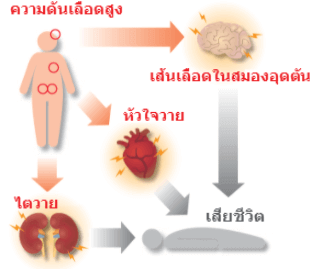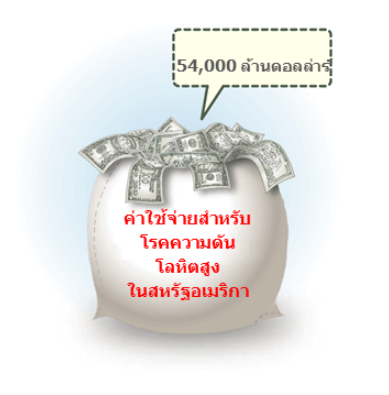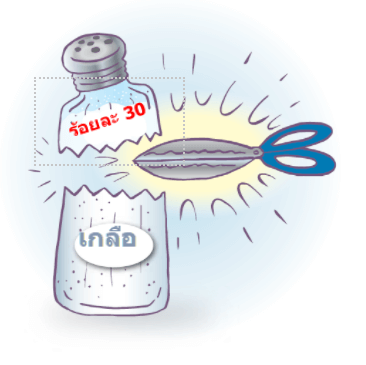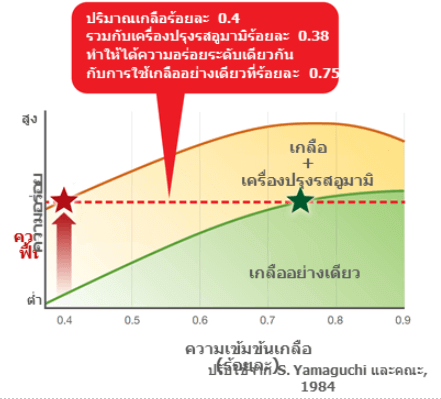The Surprising Relationship between Umami, Salt, and High Blood Pressure
High Blood Pressure: “The Silent Killer”
Usually, when you show up for a doctor’s appointment, one of the first thing that happens is that somebody puts a blood pressure cuff on your arm, puffs it up, and makes a note on your chart. If you’re lucky—and healthy—that’s the only time you have to think about your blood pressure. For many others, the doctor might tell you your blood pressure is a little high, and that you should watch what you eat or exercise more.
Checking blood pressure is so normal that it’s easy to take for granted. But actually, having high blood pressure—in medical terms, “hypertension”—is actually very dangerous. In fact, according to the world-renowned Mayo Clinic, roughly half of people with untreated hypertension will die of heart disease related to poor blood flow, such as heart attack
and another third can be expected to die due to stroke
Furthermore, high blood pressure itself has
no noticeable symptoms—and of course, this is why the doctor checks it every chance he or she gets.
■ Risk of Hypertension

Despite our knowledge of the danger of hypertension, and our ability to keep it under control through diet and exercise and a wide variety of effective medications, hypertension is on the rise in countries throughout the world. In 2015, the World Health Organization (WHO) reported that the prevalence of hypertension among adults at least 18 years of age was 20% for females, and 24% for males2. And worse still, hypertension is estimated to account for 9.4 million deaths worldwide every year3. That’s 13% of all deaths of any cause
In addition to placing a heavy burden on patients and their families, hypertension also places a heavy burden on society, in the form of healthcare costs. In the United States alone, the annual cost of hypertension is estimated at US$54 billion4. To put that giant number in perspective, that’s enough money to give a thousand dollars to each and every person in the United States, the United Kingdom and Russia
■ Annual Cost of Hypertension in US
But there is some good news. Not every country is experiencing an increase in hypertension. And one of the countries that’s bucking the trend is Japan, where the prevalence of hypertension has been steadily decreasing since the 1960s. One of the causes of this positive trend is thought to be an improvement in diet, and in particular, a decrease in table salt intake.
The Connection between
Table Salt and Hypertension
Sodium is essential for human health. Without sodium, we wouldn’t be able to contract our muscles, and our nervous systems wouldn’t work, because we wouldn’t be able to transmit nerve impulses. In addition to being essential for individual health, it can also be argued that salt has been responsible for our survival as a species. In ancient times, food was not always available—a harsh winter could spoil the hunt, and a dry spring could spoil the harvest. As a result, for thousands of years, humans have used salt as a preservative of foods including meats, butter, and even bread, thereby guaranteeing a year-round source of nutrition.
However, it’s widely accepted that excessive consumption of table salt can lead to hypertension. How can something that’s crucial for our health also be responsible for “the silent killer” high blood pressure? In short, the more sodium that’s in your body, the harder it is to eliminate excess water from your blood. Simply put, this means that there’s more fluid in your bloodstream, and therefore, higher pressure.

■ Relationship between Salt Intake and the Increase in Blood Pressure
Salt consumption is only one contributor to high blood pressure, but compared to some of the others, like heredity or stress, it’s a bit easier to control. That’s why the WHO has issued guidance that people should eat less than 2 grams of sodium per day—the equivalent
of about 5 grams of table salt. Furthermore, the WHO Member States have agreed to reduce the salt intake of the world’s population by 30% by the year 2025
Japanese clear soup seasoned using table salt, and another seasoned using substantially less table salt and umami seasoning. The result showed that, with the addition of umami seasoning, the same level of palatability could be achieved using 30% less salt8! We at Ajinomoto Co., Inc. (“Ajinomoto Co.”) believe that we can achieve a similar reduction in salt intake for a wide variety of traditional dishes around the world.
■ WHO Members Have Agreed to Reduce Intake of Salt by 30%

Be Part of the Solution?
Umami seasoning (monosodium glutamate, MSG) is
not table salt. MSG contains 12% sodium, compared to a 39% sodium content in table salt. In addition, compared to table salt, a much smaller amount of MSG is required to make food taste delicious. Together, these two points mean that the total amount sodium intake from umami seasoning is substantially smaller than that from table salt.
This leads to an interesting question: Due to the comparatively small amount of umami seasoning required to make food delicious, together with the comparatively small amount of sodium content in umami seasoning, can the use of umami seasoning help people reduce their salt intake?
According to at least one study, the answer appears to be, “Yes.” Subjects evaluated the palatability of a
■ Low-salt Food Can Taste Great
Here are a few easy recipes that use umami seasoning to help you to reduce the salt in your diet without sacrificing great taste!

Doing Our Part to Reduce Table Salt Consumption
In keeping with our commitment to help people eat well and live well, Ajinomoto Co. is engaged in a variety of activities around the world to help people reduce their table salt intake. For example:
- Japan: Established an official “Salt Reduction Day” with the Japanese Society of Hypertension, during which Ajinomoto Co. is promoting low-salt food items at major stores throughout Japan
- USA: Hosted cooking and umami demonstrations at the Food Nutrition Conference and Expo, the world’s largest annual meeting of food and nutrition professionals
- Vietnam: Provided menu development software to create well balanced school lunches with an appropriate amount of umami seasoning and salt content for more than 4,000 schools
- Brazil, Peru, and Indonesia: Conducted several symposia on umami seasoning and salt reduction
- Malaysia: Published a low-salt, umami-rich cookbook in consideration of the WHO recommendation for daily salt intake
Our Promise
Salt intake reduction is one of the most cost-effective measures that countries can take to improve people’s health outcomes. If salt consumption can be reduced by 30% by the year 2025, an estimated 2.5 million deaths resulting from hypertension can be avoided every year
We are solemnly committed to contributing to this worldwide effort through evidence-based communication and demonstration of how to effectively use umami seasoning as part of a healthy, balanced, and lower-salt diet.
About Ajinomoto Co., Inc.
The Ajinomoto Group is a global company with specialties in the business of food and amino acids, guided by our leading-edge bioscience and fine chemical technologies.
Based on the corporate message “Eat Well, Live Well.”, we have been scientifically pursuing the possibilities of amino acids in supporting the healthy lives of people all around the world. We aim for future growth and continuous contribution to greater wellness by creating value through sustainable and innovative solutions for communities and society.
The Ajinomoto Group has offices in 35 countries and regions, and sells products in more than 130 countries and regions. In fiscal 2018, sales were 1.1274 trillion yen (10.1 billion U.S. dollars). To learn more, visit http://www.ajinomoto.com
References:
- Mayo Clinic Staff, “High blood pressure dangers: Hypertension's effects on your body,” Mayo Clinic. https://www.mayoclinic.org/diseases-conditions/high-blood-pressure/in-depth/high-blood-pressure/art-20045868
- WHO, “Global Health Observatory (GHO) data: Raised Blood Pressure,” World Health Organization. http://www.who.int/gho/ncd/risk_factors/blood_pressure_text/en/
- WHO, “Q&As on Hypertension,” World Health Organization, September 2015. http://www.who.int/features/qa/82/en/
- Luis Alcocer and Liliana Cueto, “Review: Hypertension, a health economics perspective,” Therapeutic Advances in Cardiovascular Disease 2 (3): 147-155, June 1, 2008.
- The World Bank Group, “Data: Population, total: All Countries and Economies,” The World Bank. https://data.worldbank.org/indicator/SP.POP.TOTL?name_desc=false
- WHO, “WHO Issues New Guidance on Dietary Salt and Potassium,” World Health Organization, January 31, 2013. http://www.who.int/mediacentre/news/notes/2013/salt_potassium_20130131/en/
- WHO, “Salt Reduction,” World Health Organization, June 30, 2016. http://www.who.int/en/news-room/fact-sheets/detail/salt-reduction
- Data on file

